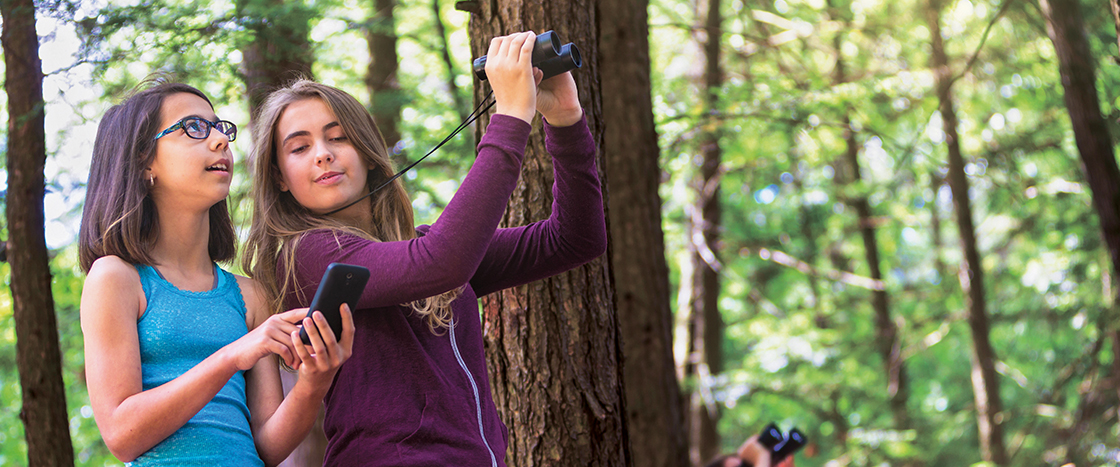Donald M. Jones/Minden Pictures
Yellow Warbler
You’re out for a walk with your family in a park in your hometown. The sun has just risen on a spring morning. Suddenly, a series of high-pitched notes pierces the quiet. Together, they sound like the words “Sweet, sweet, sweet, I’m so sweet!” You recognize the tune of a songbird called a yellow warbler.
You look up and scan the trees around you. It’s hard to spot anything in the swaying branches. But you don’t get discouraged. The search is part of the fun of observing birds in their natural habitat. This activity is called birdwatching, or birding. Every year, millions of people take part in birding activities across the U.S.
Yamina Nater-Otero began birding more than two years ago. Today, she teaches young people about birds and how to protect their habitat with the organization Audubon New York. She sees birding as an activity to connect people with nature, no matter where they live. “I love that it’s a hobby that gets me out of the house year-round,” says Nater-Otero.
You’re out for a walk with your family. You’re walking in a park in your hometown. The sun has just risen. It’s a spring morning. Suddenly, a few high-pitched notes pierce the quiet. Together, they sound like the words “Sweet, sweet, sweet, I’m so sweet!” You recognize the tune. It’s the sound of a songbird called a yellow warbler.
You look up. You scan the trees around your family. It’s hard to spot anything in the swaying branches. But you keep looking. The search is part of the fun of observing birds in their natural habitat. This activity is called birdwatching, or birding. Millions of people go birding in the United States every year.
Yamina Nater-Otero began birding more than two years ago. Today, she teaches young people about birds with the organization Audubon New York. She also teaches her students how to protect birds’ habitats. She sees birding as an activity to connect people with nature, no matter where they live. “I love that it’s a hobby that gets me out of the house year-round,” says Nater-Otero.

